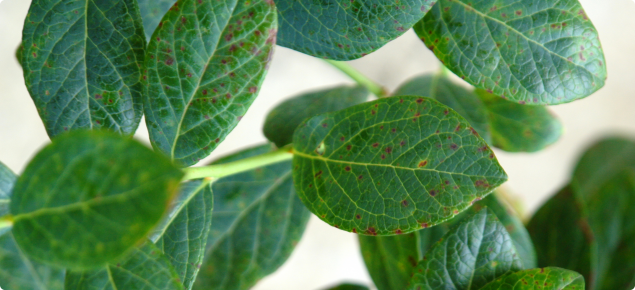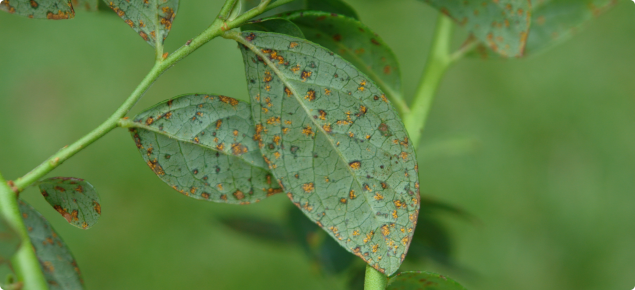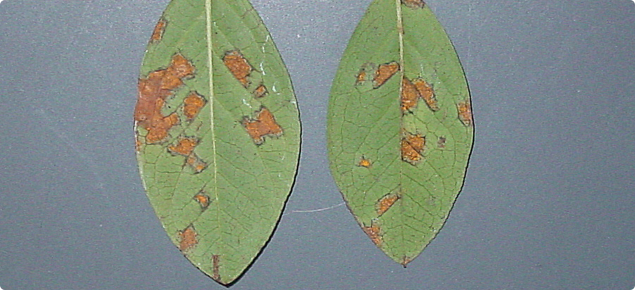About blueberry rust
Blueberry rust is caused by the fungus Thekopsora minima.
It is a serious disease that can cause extensive defoliation and occasional plant death of plants with severe infections.
Blueberry rust has been reported in Europe, Asia, Mexico, Canada, the United States, South Africa and New Zealand. In Australia, it is present in New South Wales, Queensland and Victoria, and is subject to a containment strategy in Tasmania.
What are the signs of blueberry rust?
Early symptoms of blueberry rust are small reddish spots on the upper surfaces of young leaves.
On the undersides of the leaves, yellow pustules develop. Each pustule releases thousands of yellow spores which can infect other leaves and spread the disease.
In severe cases, leaves turn brown, curl up and drop from the plant and similar pustules may appear on fruit.
How does blueberry rust spread and how can I manage it?
The disease is spread via spores carried by wind from infected plants, directly by people wearing contaminated clothing, on equipment that has been in contact with infected blueberries, or by introducing infected plants.
To reduce the risk of your blueberries becoming infected, limit the access of people (visitors and staff) onto your property, wash clothes after working on blueberry plants or properties, disinfect equipment such as pruning and gardening tools, and only introduce plants free of the disease.
Fungicides that contain active ingredients such as copper or mancozeb are effective against rust. Always refer to the label for application and withholding period information. For updated information on chemicals, visit the APVMA website and search blueberries. Please check the listed products are registered for use in WA.
What do I do if I find it?
Thekopsora minima (Arthur) Syd. & P. Syd, 1915 is now declared as a permitted organism under section 11 of the Biosecurity and Agriculture Management Act 2007; reporting of suspect blueberry rust is no longer required.
If you suspect blueberry rust is present in your plants, it's important that you not disturb or move the plant. Care should also be taken to ensure that any clothes or equipment do not become contaminated to minimise the spread of the disease to healthy plants.
Suspect blueberry rust symptoms may still be reported to the department via the MyPestGuide® Reporter app or to the Pest and Disease Information Service on +61 (0)8 9368 3080, email padis@dpird.wa.gov.au




